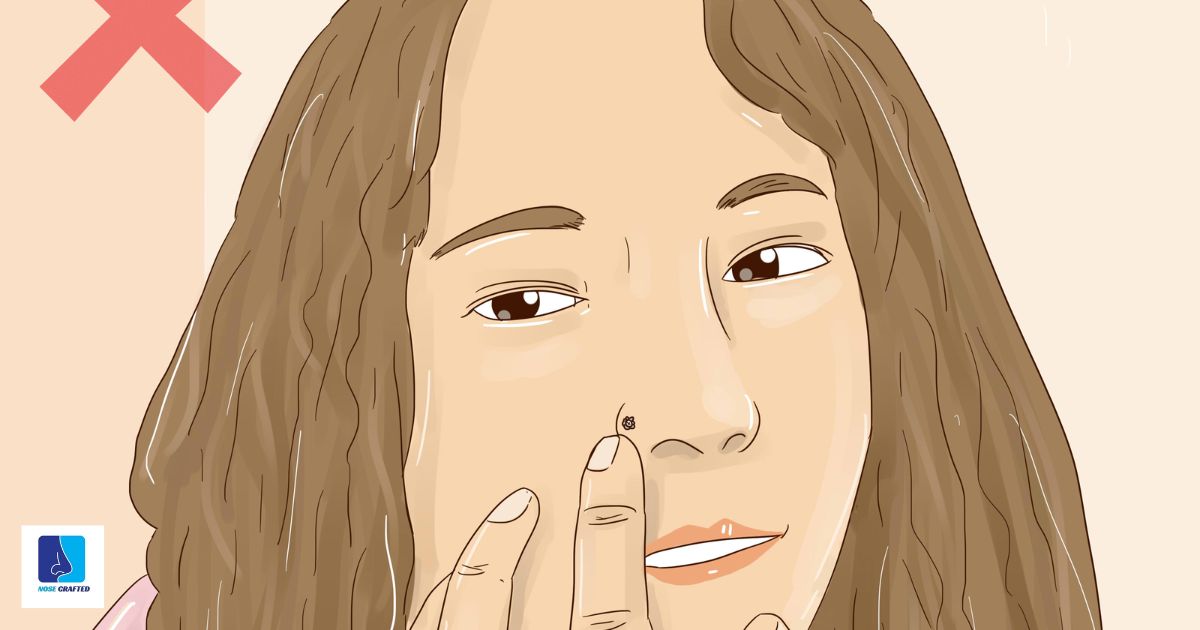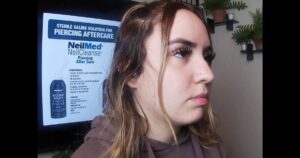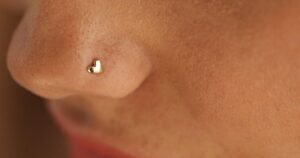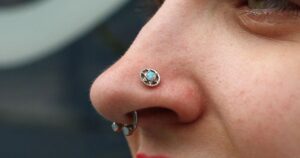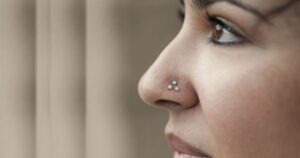A nose piercing is a small hole made in the nose to wear jewelry. It can be done on the nostril, septum, or bridge. Nose piercings are popular in many cultures and have various symbolic meanings. They can be adorned with studs, rings, or other decorative items.
Are you thinking about getting a nose piercing but don’t want to visit a piercing studio? Discover the simple and safe way to pierce your nose at home with a kit! With the right tools and steps, you can achieve a stylish look without leaving your house. Ready to take the plunge and learn how to pierce your nose at home with a kit? Let’s get started on your DIY piercing journey!
Piercing your nose at home with a kit requires careful preparation and cleanliness. First, choose a high-quality kit with all necessary tools, including a sterilized needle or gun, jewelry, and disinfectant. Clean your hands and the piercing area thoroughly to avoid infection. Mark the spot on your nose, take a deep breath, and pierce quickly and smoothly. Afterward, follow proper aftercare instructions to ensure healing.
Preparing for the Piercing

Before you pierce your nose at home, it’s crucial to prepare properly to ensure a safe and smooth process. Start by thoroughly cleaning your hands with soap and water to prevent any bacteria from causing an infection. Lay out all the components of your piercing kit on a clean surface, making sure everything is sterilized and within easy reach. Use an alcohol swab to clean the area of your nose where you plan to pierce, and let it dry completely.
Take your time to double-check the mark and make sure you’re happy with the placement before proceeding. Once you’re ready, have some ice or a numbing cream on hand to help reduce any pain during the piercing. If using ice, hold it against the spot for a few minutes until the area is numb. Make sure you have a clean, sterilized needle or piercing gun ready, along with the jewelry you plan to use. By taking these preparatory steps, you’ll be setting yourself up for a more successful and less stressful nose piercing experience at home.
Sterilizing Your Tools and Work Area
Sterilizing your tools and work area is a crucial step in the nose piercing process to prevent infections and ensure a safe experience; start by washing your hands thoroughly with soap and water, then clean the piercing tools, including the needle and jewelry, by soaking them in rubbing alcohol or a sterilizing solution for at least 10 minutes, and while they are soaking, disinfect the work area by wiping down all surfaces with a disinfectant spray or alcohol wipes, ensuring everything that will come into contact with the piercing is as clean as possible.
Finding the Perfect Placement
Finding the perfect placement for your nose piercing is crucial for both aesthetic appeal and comfort; to do this, you should consider the natural contours of your nose, the type of jewelry you plan to wear, and how the piercing will complement your facial features, all while ensuring that the spot you choose avoids any cartilage that could lead to complications or prolonged healing times.
diy nose piercing kit
A DIY nose piercing kit is a convenient option for those who want to pierce their nose at home without visiting a professional studio. These kits typically include all the necessary tools, such as a sterilized needle or piercing gun, nose jewelry, disinfectant wipes, and detailed instructions. By following the steps outlined in the kit, individuals can ensure a safe and precise piercing experience. However, it’s essential to maintain strict hygiene practices and follow the instructions carefully to avoid complications like infections or improper placement.
While DIY nose piercing kits offer the flexibility and cost savings of performing the piercing yourself, they also come with responsibilities. Proper preparation is crucial, including thoroughly cleaning the area and tools before beginning. Additionally, aftercare is vital for healing, requiring regular cleaning and monitoring for any signs of infection. With careful attention and adherence to the guidelines provided, a DIY nose piercing kit can help you achieve a stylish and professional-looking result in the comfort of your own home.
can you pierce your own nose with an earring
Piercing your own nose with an earring is not recommended due to several reasons. Firstly, earrings are not specifically designed for piercing and may not be sharp or sterile enough to create a clean hole in the skin. Using an earring for piercing increases the risk of infection and complications, as it may introduce bacteria or other harmful pathogens into the piercing site. Additionally, earrings are typically thicker than piercing needles or studs, which can cause more pain and trauma during the piercing process. It’s far safer and advisable to get your nose pierced by a professional rather than attempting it yourself, as doing so significantly reduces the risk of complications and ensures proper sterilization and technique. So, leave the task of nose piercing to the experts and avoid any potential risks or regrets of doing it my nose at home.
Furthermore, improper piercing techniques with an earring can lead to uneven or crooked piercings, which may be difficult to correct and could result in aesthetic dissatisfaction. It’s crucial to prioritize safety and hygiene when getting a piercing to minimize the risk of complications and ensure a successful outcome. Therefore, it’s highly recommended to seek professional help from a trained piercer who uses sterile equipment and follows proper piercing procedures to achieve a safe and satisfactory nose piercing experience.
how to numb your nose at home without ice
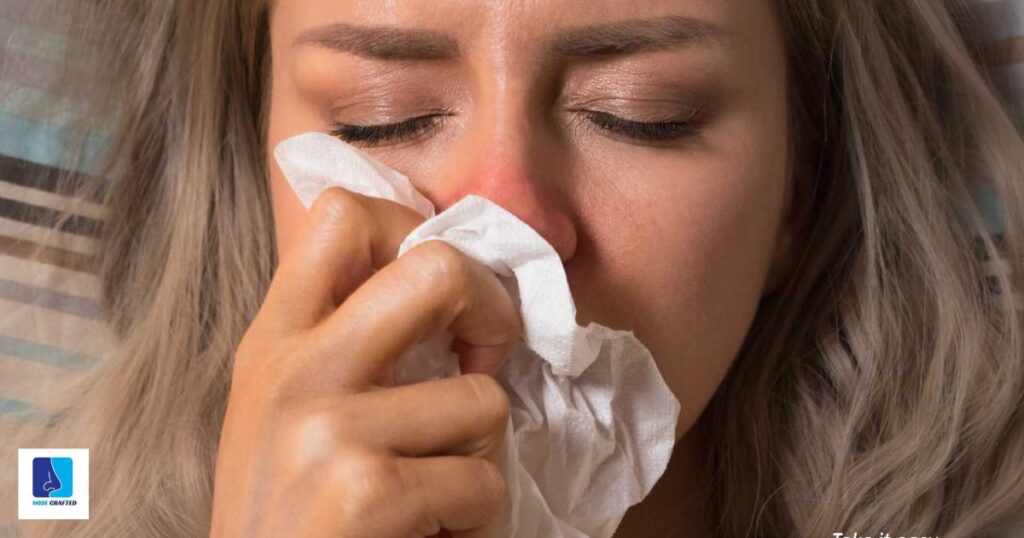
Numbing your nose at home without ice is a simple process that can help alleviate discomfort during procedures like nose piercing. One effective method involves using over-the-counter numbing creams or gels that contain lidocaine or benzocaine as their active ingredients. These products work by temporarily desensitizing the nerve endings in the skin, reducing the sensation of pain. Before applying any numbing cream, it’s crucial to cleanse the area thoroughly to remove any dirt or oils that could interfere with its effectiveness.
Another alternative for numbing the nose without ice involves using natural remedies such as clove oil or peppermint oil. These essential oils have been traditionally used for their analgesic properties and can provide temporary relief from pain and discomfort. To use, simply dilute a few drops of the essential oil with a carrier oil like coconut oil or olive oil, then apply the mixture to the nose area using a cotton ball or swab. It’s important to perform a patch test first to ensure you don’t have any adverse reactions to the oils.
where to pierce your nose diagram
When considering where to pierce your nose, it’s crucial to understand the anatomy of your nose and the different options available. A common placement is the nostril, where a small hole is made on the side of the nose. This area offers versatility in jewelry choice and is relatively easy to care for during the healing process. Another option is the septum, the thin wall of cartilage that separates the nostrils. Piercing the septum, often called a septum piercing, involves piercing the soft tissue just below the cartilage.
Before deciding on a piercing location, it’s advisable to consult with a professional piercer who can assess your anatomy and provide guidance based on your preferences. They may also use a nose piercing diagram to visually demonstrate the various options and help you make an informed decision. Ultimately, the best placement for your nose piercing will depend on factors such as your facial structure, desired aesthetic, and lifestyle.
how to pierce your nose without it hurting
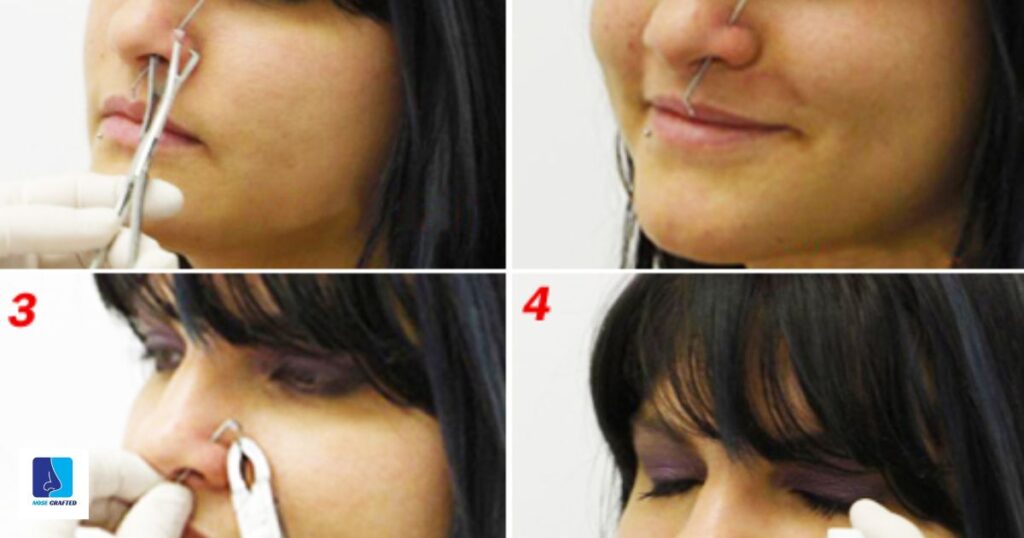
Piercing your nose can be a daunting prospect, especially if you’re concerned about the pain involved. However, with the right approach and preparation, it’s possible to minimize discomfort during the process. Firstly, choosing the appropriate piercing method and tools can make a significant difference. Opting for a professional piercing needle instead of a piercing gun can reduce pain, as needles create a cleaner and quicker puncture with less tissue trauma.
Furthermore, proper aftercare is crucial for minimizing pain and promoting healing post-piercing. Following a strict cleaning regimen using saline solution or a gentle soap can prevent infections and reduce swelling, thereby alleviating discomfort. Avoiding touching or rotating the piercing unnecessarily can also prevent irritation and pain. Additionally, opting for jewelry made from hypoallergenic materials like surgical stainless steel or titanium can reduce the risk of allergic reactions and discomfort. By following these steps and maintaining diligent aftercare, you can pierce your nose with minimal pain and enjoy your new look confidently.
Conclusion
In conclusion, piercing your nose at home with a kit can be a feasible option for those who prioritize safety and proper preparation. By carefully selecting a high-quality kit, sterilizing tools, and following step-by-step instructions, you can achieve a stylish nose piercing without leaving your home. Remember to prioritize cleanliness and hygiene throughout the process to minimize the risk of infection and discomfort. Additionally, diligent aftercare is essential for promoting healing and reducing pain post-piercing.
By adhering to these guidelines, you can confidently embark on your DIY piercing journey and enjoy your new look with peace of mind. So, are you ready to take the plunge and give yourself a nose piercing at home? With the right tools, knowledge, and care, you can achieve stunning results and flaunt your new accessory with confidence.
